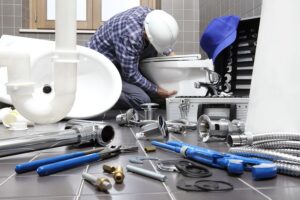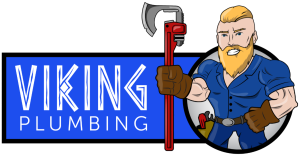Plumbing and drainage are essential to all buildings, residential, commercial, and industrial. Modern technology and design have transformed the plumbing sector. Modern advanced plumbing and drainage solutions prioritize functionality, sustainability, energy efficiency, and cost.

Plumbing no longer uses lead or iron pipes. Modern plumbing systems use PVC, CPVC, PEX, and stainless steel. These materials resist corrosion, last long, and protect water quality. Modern plumbing has led to more advanced systems and methods that provide effective water delivery and waste removal.
Greywater systems are a popular method. Greywater is a shower, washing machine, and sink wastewater, not toilet water. Modern plumbing systems may reuse this water for toilet flushing, garden irrigation, and cleaning. This saves water and eases municipal treatment plant load.
Plumbing today stresses clever technologies. Water leak-detecting devices can promptly notify homeowners of pipe leaks, preventing property damage. Additionally, smart water heaters can now be programmed to heat water just during certain hours, conserving electricity. Imagine taking a morning shower without waiting for the water to heat up, and then the heater switches off to save electricity.
Let’s discuss innovative drainage systems. Avoiding water logging, protecting building integrity, and maintaining sanitary conditions require effective drainage. New drainage methods that address these issues and protect the environment have emerged in recent times.
Permeable pavements are prevalent in cities. Water percolates through these pavements, minimizing sewage runoff. These pavements recharge groundwater, mitigate the heat island effect, and prevent flash floods by letting water seep in.
Green roofs are another drainage innovation. Green roofs are vegetated. These roofs collect rainwater, insulate, shelter wildlife, and lower urban air temperatures. The absorbed water can be retained or slowly released, reducing the risk of high-volume runoff.
Advanced drainage technologies address environmental and local difficulties. Consider sump pumps with sirens and backup batteries. Basement flood-prone locations benefit from these pumps. The backup battery keeps the pump running during power outages, and the alarms warn homes when water levels reach too high.
Trenchless sewer repair is another excellent drainage innovation. Technicians may now repair sewer pipes without tearing up a yard or driveway. This preserves the landscape, speeds up restorations, and cuts labor costs.

Plumbing and drainage technology are rapidly improving; thus, issues are expected. Industry professionals must refresh their expertise to use new methods and equipment. They must also learn about the various materials and their installation needs and difficulties.
The goal is to incorporate as many advanced systems as possible, but balance is key. Overcomplicating a plumbing or drainage system might cause worse issues. The needs of a building or area must be assessed and solutions tailored.
Advanced plumbing and drainage demonstrate human ingenuity and the desire to build sustainable, efficient, and eco-friendly solutions. As urbanization increases and resource demand increases, sophisticated plumbing and drainage systems will become more important. Their development will shape our cities and residents’ well-being.
The Details of Modern Plumbing and Drainage Systems
Plumbing. Often associated with hidden pipes and faucets behind walls and under feet. But modern plumbing and drainage is more like a sci-fi movie. Innovation and technology have transformed plumbing and drainage systems to improve user experiences and the environment.
Modern buildings have complex systems that handle more than water. They combine precision, eco-friendliness, and futuristic thought. Once a conduit, the pipe is now a smart device that saves money, energy, and the environment.
This evolution is driven by sustainability. Greywater systems are now in the spotlight. These devices filter and reuse shower and sink water. That water that swirled down your sink may be used to water your plants or flush your toilet. This cyclical strategy is smart and sustainable.
It’s more than water reuse. Technology is being integrated into modern plumbing systems in surprising ways. Imagine a system that regulates water heating based on your habits—when you wake up, shower, and work. Not pipe fantasies; today’s reality.
However, drainage now goes beyond preventing water from accumulating. Modern drainage systems are eco-masterpieces. Concrete-heavy cities are now getting permeable pavements. Unlike impermeable pavements, these enable rainwater to seep through, minimizing runoff and nourishing groundwater. Urban jungles are transformed into eco-friendly habitats.
Green roofs are another intriguing trend. Roofs have traditionally protected from the weather. Green roofs are turning them into ecosystems. Vegetated roofs absorb rainwater, reduce the urban heat island effect, and provide habitats for wildlife. Moving toward a more harmonious relationship between urban constructions and the environment.
But what if things go wrong? In the past, sewer line damage required massive excavations, inverted gardens, and protracted repair timeframes. Trenchless sewer repairs fix pipes without turning your yard into a construction site. Advanced procedures make these repairs faster, less intrusive, and cheaper.

Progress always faces obstacles. Installation and maintenance specialists must change the plumbing and drainage systems. Fixing a faulty pipe now involves smart systems, different materials, and novel methods.
Understanding balance is crucial. Innovation and over-complication are delicate with complex systems. Each structure and area has different needs. Instead of imposing a one-size-fits-all approach, modern solutions must be tailored to these needs.
Plumbing and drainage, two seemingly commonplace components of our lives, have become dynamic fields. The complex combination of pipes, water, and technology promises a more sustainable, efficient, and environmentally friendly water future. We’re redefining urban life via innovation and forward-thinking in plumbing and drainage.
Advanced plumbing and drainage systems are crucial as urbanization and resource demand rise. These technologies advance sustainable and efficient urban development, affecting citizens and the environment. Plumbing and drainage are now crucial to smarter, eco-friendly communities as technology and design advance.
Modern plumbing prioritizes resource efficiency and eco-friendliness. Greywater systems recycle wastewater. This saves water and reduces municipal treatment plant load. Modern plumbing systems reduce water waste and energy use, demonstrating a rising commitment to sustainability.
The transformation of drainage systems with permeable pavements and green roofs shows a harmonious interaction between urban buildings and the environment. These green projects reduce stormwater runoff, urban heat island effect, and city biodiversity. Modern drainage systems improve city aesthetics, mitigate climate change, and improve urban life by incorporating nature. Advances in plumbing and drainage will shape the future of our cities and promote sustainable, efficient, and eco-friendly surroundings as urbanization continues.

